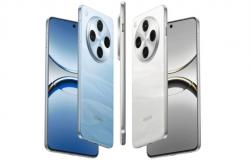A new medical device, which resembles a simple swimming cap, offers an innovative perspective for treating depression. This particular headset sends weak electrical impulses into the brain and could revolutionize the treatment of forms of depression that are resistant to conventional approaches. Tested by volunteers as part of a clinical trial, this device promises encouraging results for a large proportion of patients having difficulty with traditional treatments.
A simple device to use at home
Depression affects millions of people worldwide, and about a third of patients suffer from what is called “resistant” depression. For them, usual drug treatments and psychological therapies show little or no effectiveness. The possibility of a treatment that could be easily applied at home represents enormous progress. Researchers highlight this new device as hope, especially for those who have not found relief from existing treatments.
The study, the results of which are published in Nature Medicineis based on the use of transcranial direct current stimulation (or tDCS, for “transcranial direct current stimulation”), a technique which consists of applying a low intensity electrical current to the scalp. This device, worn like a hat, is designed to stimulate the brain without requiring direct medical supervision. As part of this trial, 174 adults with depression were recruited and divided into two groups. The first group actually received the electrical impulses, while the control group wore a headset that simulated the stimulation without actually providing current.
Patients treated with active stimulation received a current of two milliamps, a tiny amount, equivalent to about 0.5% of the consumption of a 100-watt light bulb. This treatment was administered during thirty-minute sessions, five times a week at the beginning, then three times a week for the following seven weeks.
Promising results but to be confirmed
Ten weeks after the start of this experiment, the researchers found that almost 45% of the participants in the group who received transcranial stimulation had a notable reduction in their symptoms. In comparison, only 22% of participants in the control group reported improvement.
These results suggest that home transcranial stimulation could offer an effective response for patients with resistant depression, although further research is needed to understand why some patients respond positively while others do not respond in the same way.
Indeed, other research has obtained less conclusive results, which pushes the scientific community to approach this approach with caution. To go further, here is how depression changes the perception of existence.






